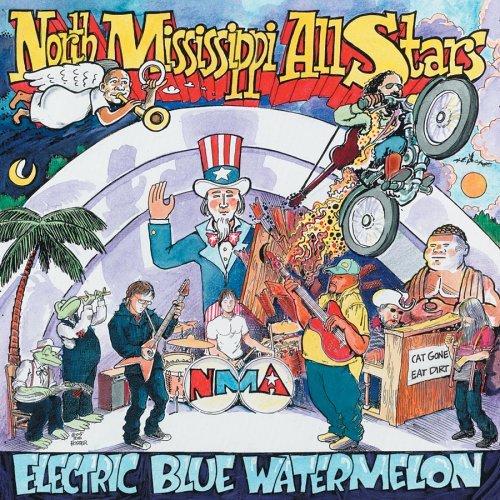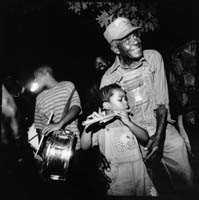Outsides EBW
|
|
Insides EBW
|
Outsides
What is the meaning behind the title Electric Blue Watermelon?
Lee Baker is responsible for the title of the North Mississippi Allstars latest album. Baker was a guitarist in Jim Dickinson’s band Mudboy and the Neutrons in the 1970s and became a mentor for Luther. During the Memphis Country Blues Festivals, Lee Baker would perform in his band called Electric Blue Watermelon. Sadly, Lee Baker was murdered in September 1996. The Allstars chose Electric Blue Watermelon as a title to further its concept.
What is the concept?
Luther Dickinson explains, "In the Nineties, what just turned me around completely was getting to know [Mississippi blues legends] Otha Turner, R.L. Burnside, and Junior Kimbrough. I just learned so much from those guys. My father [producer Jim Dickinson] couldn't believe that we were able to have that musical relationship. So the album's a nod to that multi-generational passing on of how blues becomes rock & roll."
The NMAs have been picky about the content of the album in many ways. Originally scheduled for release in February 2005, the boys chose that month to return to the studio for additional recordings and tweaks. Later, the band announced at the Bonnaroo festival that August would be the new release month, but it was delayed yet again in order to add more artwork into the CD sleeve.
Read what Luther and Jim Dickinson say about Electric Blue Watermelon
Set pieces: Uncle Sam, Buddha, palm trees – These were decorations on the stage during the original performance of the Electric Blue Watermelon band back in the late sixties.
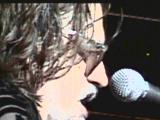
|
Jim Dickinson – Luther and Cody’s father, well-known music producer, and piano player. During an interview with An Honest Tune magazine Jim Dickinson said that he made his sons play with him while they were growing up. One reviewer commented, “Dickinson was so strange that he had to grow his own band.” |
"Cat Gone, Eat Dirt" - Quotes from the late, great Memphian Gridiron Gene.
Lee Baker – The guitarist of Jim Dickinson's band, Mudboy and the Neutrons and originator of the Electric Blue Watermelon band, is flying out of the Shell on the motorcycle. Baker was tragically murdered in 1996. The CD's title was taken from Baker's backup band, Funky Down Home & the Electric Blue Watermelon. The Baker-assembled psychedelic blues act became infamous at the 1967 Memphis Country Blues Festival. "'Funky Down Home,' that was his character," Luther said. "When Baker opened up his set, he rode out of an outhouse on a motorcycle wearing a dress."
Jim Crosthwait – Washboard player for Mudboy and the Neutrons, the band that inspired Luther and Cody’s jugband Gutbucket. Jimmy Crosthwait originally moved Cody to pick up the washboard. Jimmy is credited as an acoustic washboard player in Tate County Hill Country Blues and Shake Hands With Shorty.
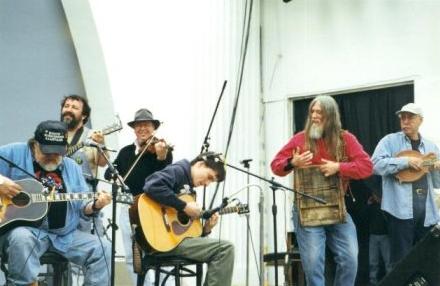
|
Otha Turner – Friend and mentor to the Dickinson family. Born to sharecroppers of Mississippi in 1907, Otha grew up chopping cotton and plowing fields at an early age. As a teenager Otha learned to play the tin tub which led to the drums. Otha eventually showed an interest in making and playing his own bamboo fife, sort of a high-pitched piccolo that plays in one key. Otha continued the tradition of field hollers by teaching his children and grandchildren how to play fife and drums and held annual goat barbecues for the town. Luther and Cody basically mention that they “stumbled” onto the Hill Country Blues scene. It was under their noses the entire time they were living in Mississippi but didn’t really discover it until after they started their punk band DDT. Otha passed away in 2003, but Luther remembers the early days of their relationship, “We were just sitting there on his front porch jamming and he'd jump up and throw his hat down and start singing, and he just spoke in poetry.” |
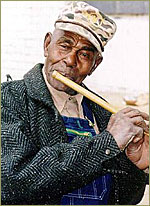
|
Sun and Moon - Constant symbols/references in NMA recordings...Be So Glad, Circle in the Sky, Time for the Sun to Rise, Moonshine.
The UFO - ...unexplained...
The man behind the cover art: Tom Foster
Tom Foster came of age in West Memphis during the 1960s. He used to drive to the Overton Park Shell to hang out and meet people like Jim Dickinson, cartoonist Jerry Lawler, Barbarian Records founder Jim Blake, and music writers Stanley Booth and Robert Palmer. His contacts helped him to become the main illustrator for the tabloids of the underground Memphis music scene, Atlantis, Tennessee Roc, and Strawberry Fields, and made friends with Alex Chilton and Sid Selvidge. Foster continues to illustrate posters to publicize Memphis bands and claims to love antiques, Shakespeare, and Japanese culture.
The cover art for Electric Blue Watermelon began during the North Mississippi Allstars’ studio sessions. Tom Foster began doing cartoon sketches of the cover as well as capturing the band members as they were playing. At one point Tom Foster showed Luther the cover art and Luther said, “but there isn't an amp. You can't have us playing and not show an amp.” So Tom added the amp.
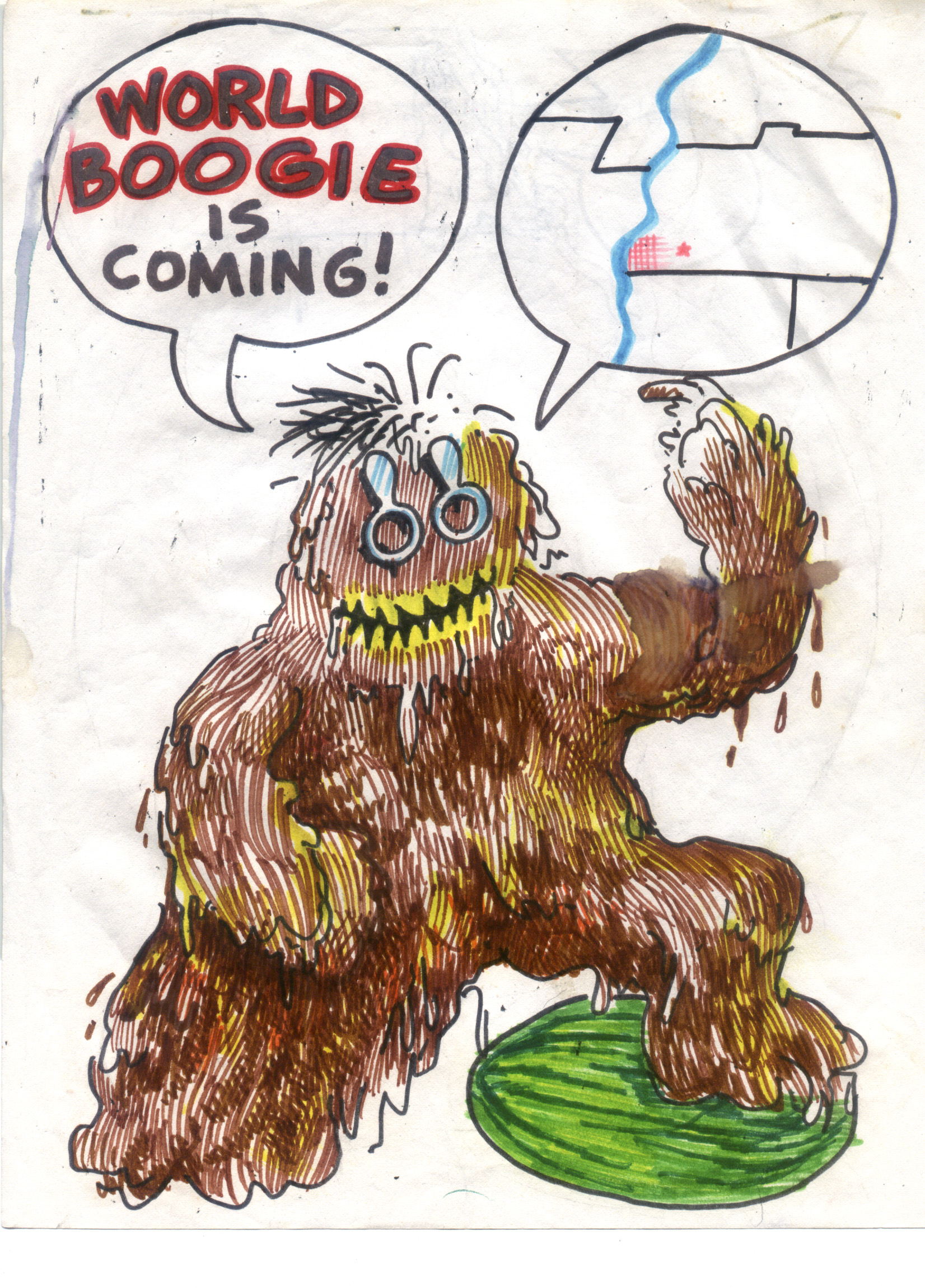
Click to see underground Memphis newspapers
Insides
The characters, settings, and influences of the Electric Blue Watermelon:
|
Young Kenny Brown - Kenny Brown grew up in the north Mississippi hill country. At age 10 he learned to play guitar from his neighbor Joe Callicott and soaked up the fife and drum sound from Otha Turner's BBQ's down the road. Kenny apprenticed with harmonica player Johnny Woods and Mississippi Fred McDowell by the time he was in his late teens, gained influence from Junior Kimbrough, and soon becoming R.L. Burnside's right hand for twenty-six years. Burnside claimed Kenny as his adopted son. Brown has traveled all over the world and continues to tour spreading the Mississippi Hill Country sound. He toured with Jojo Hermann, Luther and Cody during the Smiling Assassins tour and has also opened for Widespread Panic. Kenny Brown onced said in an interview, "It's great that so many younger people are listening to the blues. Back in the '70s, when I was coming up playing with cats like R.L., Johnny Woods, and Junior [Kimbrough], I was the only white kid around. But over the last 10 years, I think people have become hungry for something real. I was beginning to wonder if it would ever happen, and now I'm finally making a living playing the blues." - Referenced in: Teasin Brown, Moonshine, Bang Bang Lulu |
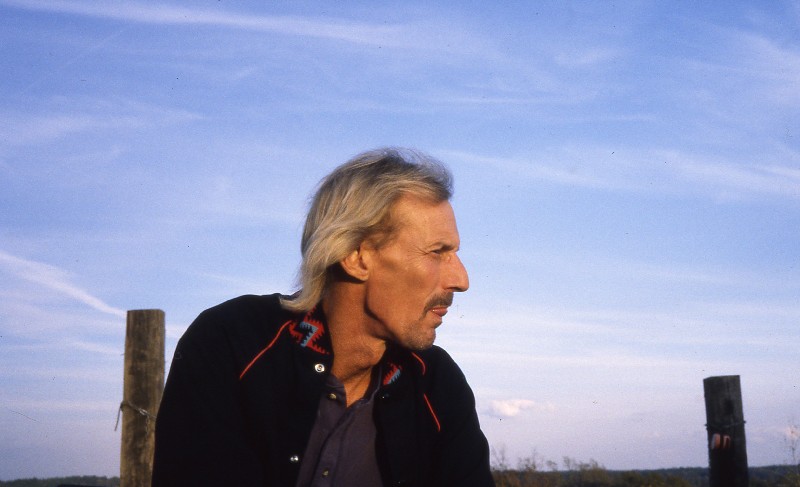
|
Bobby Ray Watson - In the liner notes to It Came From Memphis volume 2, Bobby Ray Watson is said to be "the great untold story of Memphis in the late 1960s and 1970s." Like Kenny Brown, Bobby Ray played with Johnny Woods and attended Turner picnics. Also dubbed "one of the finest male country blues singers alive," Watson's bands were called Bobby Ray and the Ray Guns as well as the Rapscallions. He has played harmonica alongside Jim Dickinson, Ry Cooder, and Lee Baker. - Referenced in: Moonshine
Mark Unobsky - From an interview with Jim Dickinson, "I went to high school with him. Of all the crazy white boys trying to play acoustic blues, he was the best of them. He makes Cooder sound like he's playing the ukelele. He's dead now. He lived in San Francisco for years. He wrote some songs, but he couldn't publish 'em 'cause he was on disability. He basically had a lifetime income of selling guns and dope to the Grateful Dead. I first heard that song [Asshole] in the '70s, and I thought 'God, what a wonderful song, but nobody'll ever hear it.' And they are literally playing it on the radio now. That's how much the world has changed. They've played it in Seattle, in Minneapolis, and they played it in Memphis last Sunday. It's a love song about a woman. '...We're in agreement on my soul...' [rhyming with 'asshole'] is what gets me. This guy was a weapons expert. Back in the '50s when everybody had a switchblade, he had a switchblade with four buttons and four blades. Shit jumped out of it everywhere. He was a remarkable human being, and an amazing guitar player. I don't know whether you've every heard my skinflick music for Great Big Fish which was released on soundtrack in France, but he's playing guitar on it, with the Bar-Kays. He was an amazing musician, and [was] almost completely unrecorded. He was the manager of The Charlatans in San Francisco in the '60s [the brilliant cult band with Dan Hicks and Mike Wilhelm], had the Red Dog Saloon in Virginia City, Colorado [which was where the San Francisco scene was born]. The Charlatans were his house band, and he also supposedly was the first person outside of Texas to employ Janis Joplin. He had the first psychedelic light show and night club. 'Asshole' is by far his best composition. With the arrangement for that song, I was trying to reference various things from my past. There was a guy on the original Today show who played live with his band, called Art Van Damme, and the Art Van Damme Quintet. They had vibes and accordion together, and that's what I was referencing there, and showcasing that fiddle player, a local guy that I think is a fabulous soloist. And of course that's Luther playing slide. He's playing a guitar that Unobsky, the author of the song, left him in his will. Unobsky is basically behind the formation of the North Mississippi Allstars. He talked to Luther about the idea of playing the Delta Blues with a power trio. That's where Luther got it. He was a very private man who didn't have many friends. Not only do I treasure his friendship, but he was a big help to Luther, when he didn't have to be." Shake Hands With Shorty is dedicated in loving memory of Mark Unobsky and Lee Baker.
Junior Kimbrough - Junior Kimbrough changed the blues of Mississippi. Being the naughty kid that he was, at age six Junior would steal his daddy's guitar when no one was looking. He learned to play well fast. He created a propulsive drone, a hypnotic blues, powerful back beats and brought them into an electric age.
Junior's music was almost never recorded until the Fat Possum record label was created. He was 62 when the album "All Night Long" was finally released. Junior Kimbrough died of a heart attack in June of 1998 at the age of 67, but his legacy remains with his children and new blues generation. - Referenced in: Moonshine, Horseshoe
|
Junior’s Juke Joint - Once Junior Kimbrough decided to play guitar rather than sell tractors, he was
having parties at his house every Sunday night. Soon, his house became so crowded and chaotic that he had to rent an
apartment away from home. His house on the other hand was becoming a sort of club that everyone referred to as
"Junior's Place."
Luther and Cody used to visit Junior's place when it was a full-out juke joint many years later. The teenagers learned by watching Junior, R.L. Burnside, and their families play the nights. Cody remembers, "I got to know the people who made the music and become a part of them. I had a scientific approach to Junior's. I didn't want to alter what I was witnessing. I was friends with the musicians and I would hang out with them. Once they found out I could play drums, they were insulted if I didn't play." Soon after Junior died in 1998, the Juke Joint left with him as it burned to the ground one April morning. Two of his sons, David and Kenny, had been keeping his club going after Junior's death. According to the brothers, musical equipment and memorabilia (such as art depicting waterskiing accidents, Oprah Winfrey) were also lost in the fire. To many, Junior Kimbrough's Juke Joint was home to dangerous good times, mad moonshine, RL Burnside's white lightning, and real boogie blues.- Referenced in: Moonshine, Horseshoe |
|
Old Gabe - Gabe was Otha Turner's nickname. - Referenced in: Moonshine
Gravel Springs - The community where Otha Turner lived and played. - Referenced in: Horseshoe
|
Otha Turner - One of the legends of Mississippi befriended by the Dickinsons, Otha Turner was a
longtime fife player who performed at his annual goat barbecue’s backed by his family on marching
snare/bass drums. The music from the fife and drum band is in the style of old field hollers of the early South.
Luther became friends with Otha when he moved to Mississippi as a teenager as both Dickinsons and Turners performed at the Memphis Center for Southern Folklore's Heritage Festivals. Otha taught Luther to “feel” the music, and over the years Luther added Otha’s fife to other North Mississippi Allstars albums (Otha is featured in "Be So Glad" from Polaris) as well as producing two albums for the Rising Star Fife and Drum Band. Turner died in 2003, at the age of ninety-four, but his lyrics live on through Electric Blue Watermelon. "After Otha passed, I really started writing for this record," Luther says. "I went through all these old tapes of him and me sitting on his front porch drinking moonshine, playing guitars and joking around. I transcribed the lyrics that Otha would improvise, and I organized them into three songs." To this day, Otha’s children and grandchildren continue the fife and drum tradition. The Rising Star Fife and Drum band accompanied the North Mississippi Allstars and the Dirty Dozen Brass Band on the Shake, Holla, and March tour. - Referenced in: Moonshine, Horseshoe, Bounce Ball (featured), Album cover |
|
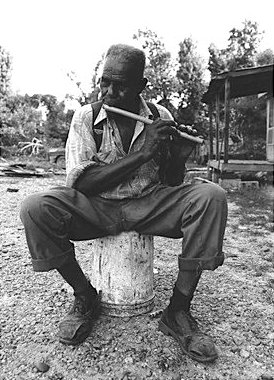
Click here to view a movie of Otha from 1971 called, Gravel Springs Fife and Drum - opens with Realplayer (10:28)
from the Center for Southern Folklore
Lee Baker – Lee Baker led the blues-rock band Moloch in the late 1960s, making one record for a Stax subsidiary in 1970. He went to help form Mudboy & the Neutrons with friends Jim Dickinson, Sid Selvidge and Jimmy Crosthwait. His long career included stints with Charlie Rich, but his true love was acoustic blues. He played with many of the greats, including Mississippi Fred McDowell, Sleepy John Estes, Bukka White, Gus Cannon and Furry Lewis. It was with Lewis that Baker forged his deepest relationship and even played "When I Lay My Burden Down" with Selvidge at Furry Lewis’s funeral. In the '90s, Baker became a Beale Street regular with Lee Baker and the Agitators. Luther and Cody dedicated the Gutbucket album Where’s the Man With the Jive? to Baker as well as Shake Hands With Shorty. - Referenced in: Horseshoe, Album cover, Album title
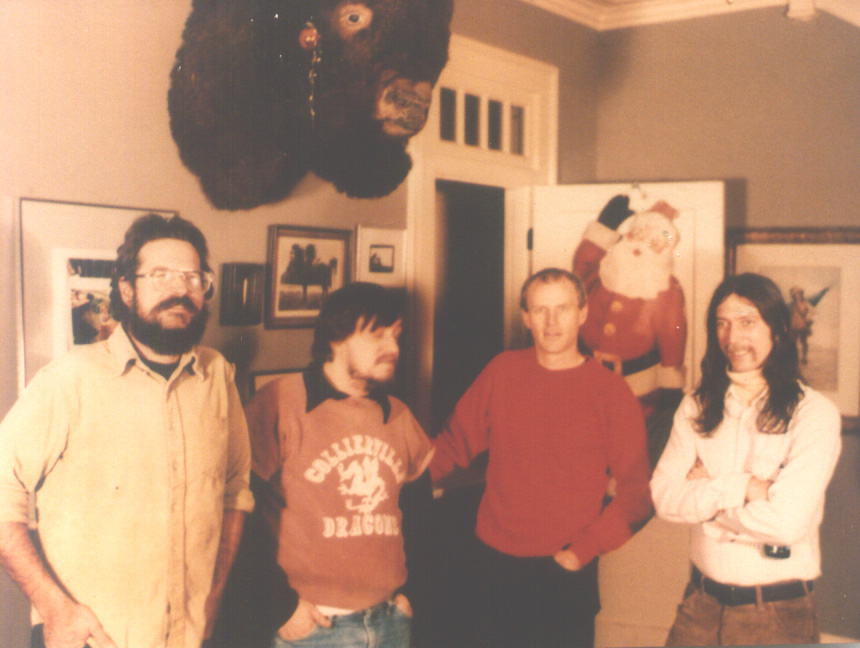
Mudboy and the Neutrons
(L-R) Lee Baker, Jim Dickinson, Sid Selvidge, Jim Crosthwait
photo by William Eggleston
Horseshoe Lake - Lee Baker was killed Tuesday, Sept. 10, 1996 along with his aunt, Sally McKay. They were at McKay's home in Horseshoe Lake, Arkansas. They were shot by two teenage boys in a botched robbery attempt and the home was burned. - Referenced in: Horseshoe
Marshall County, Highway 4 - This was the location of Junior Kimbrough's Juke Joint. - Referenced in: Horseshoe
The Songs:
Mississippi Bollweevil: is an old Charley Patton song without as many lyrics and presents a familiar "Mud" ostinati. This song is a throwback the NMA’s Gutbucket jugband days with the inclusion of the washboard and a cigarbox guitar.
| No Mo: was written more than 10 years ago when the Luther and Cody were in their punk band, DDT. This was around the time that Luther was beginning to delve deeper in the hill country blues and felt he couldn’t write songs in the punk style anymore. "No Mo" has 3 distinct stories all resulting on how things "just ain’t the same no mo." The first section tells a story of the two brothers as young kids now grown up which later concludes itself in the song with "here I am 32, got it going on, gonna continue, got it good, knock on wood." The second section focuses on Luther’s first fascination with music when it was fresh and new. The third section focuses on a wider perspective of the world and the south’s history in general with “progress went wrong, shoulda let it alone." The updated version of "No Mo" includes Memphis rapper Al Kapone doing a repetitious "it ain’t the same no mo" somewhat bringing back the gritty form of the original song and keeping a constant drive of the theme in the listeners’ heads. The extended rap by Al Kapone is included on the Chopped and Screwed version of EBW. |
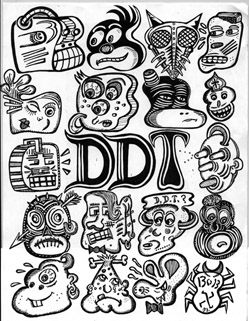
|
Teasin' Brown: Luther says that Teasin' Brown is a flirtatious black girl. On August 5, 2005, the NMAs performed this song live on Late Night with Conan O'Brien, their second appearance on the show. The lyrics to "Teasin' Brown" are from notes Luther took over the years when Otha made up songs. "All Otha's verses are 'you work all day, you stay out all night with another woman, you come home when the sun's coming up and your woman won't let you in.' Pretty much all his songs are around that scenario."
Moonshine: is ballad telling the true story of the Mississippi Hill Country blues legends that lived during the time the Allstars were learning music. Probably the NMA's most personal song in all of their albums, Moonshine references Junior's juke joint, Bobby Ray Watson, Kenny Brown, Otha Turner, and sitting in with the house band of Kimbroughs and Burnsides, otherwise known as the bootleggers of moonshine whiskey. Moonshine represents what was and what is continued through the new.
Hurry Up Sunrise: is one of the three songs Luther based on a saying by Otha Turner. In this version, Luther and Lucinda Williams sing as a conversation between a man and woman. As Luther explains, “the man's coming in, he's been out all night and he's trying to get back home. He finally gets home and his woman doesn't want anything to do with him. Lucinda is a pretty old friend and was an obvious choice.”
Stompin My Foot: A song originally titled "Ass" and features lap steel guitar player Robert Randolph, who worked with the NMAs on The Word gospel album, and Al Kapone on a funky vocal.
Bang Bang Lulu: This is Furry Lewis' version of "St. Louis Blues."
Deep Blue Sea: stands out due to Cody Dickinson's stylized drumming. The drums aurally symbolize a rolling sea. The NMAs performed this particular piece many times live before releasing their studio recording making it one of the few new songs for fans to hear.
Mean Ol' Wind Died Down: A song written by Luther that has been apart of the NMA repetoire since the late nineties when they were touring with RL Burnside. This song is finally included on Electric Blue Watermelon after the Allstars attempted to record it twice. Otha Turner's grandchildren can be heard singing the final chorus.
Horseshoe: is in the style of an old traditional and focuses on the passing of three influential musicians in the Dickinson’s lives. Like a normal traditional, the song is uplifting as it is melancholy. It ends with a New Orleans style brass funeral march performed by the Dirty Dozen Brass Band, a band who has often accompanied the Allstars on tour most notably featured in the Shake, Holla, and March tour of 2004.
Bounce Ball: This is a recording that Luther and Cody made of Otha Turner and his Rising Star Fife and Drum band back in 1999. At the end of the track, Otha can be heard saying, "It's on y'all now." To which Luther replies, "thank you, Mr. Otha." Otha continues, "You're welcome. It's on y'all now. Y'all do whatever you want."
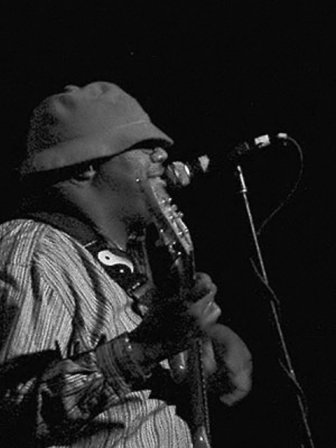
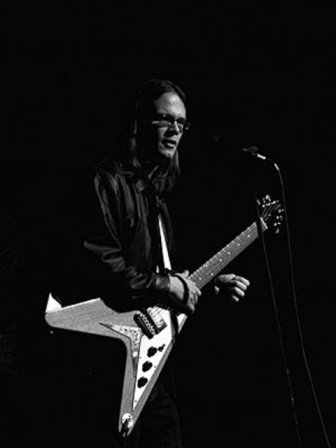
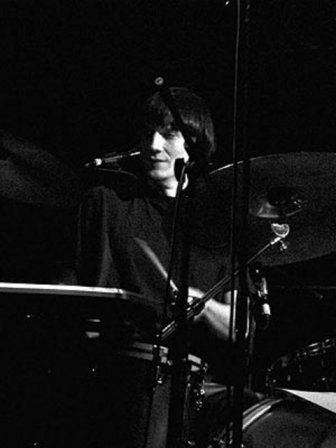
Special Guests:
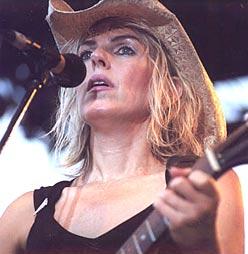
|
Lucinda Williams: Official Site
From the Allmusic Guide: The object of cultish adoration for years, singer/songwriter Lucinda Williams was universally hailed as a major talent by both critics and fellow musicians, but it took quite some time for her to parlay that respect into a measure of attention from the general public. Part of the reason was her legendary perfectionism: Williams released records only infrequently, often taking years to hone both the material and the recordings thereof. Plus, her early catalog was issued on smaller labels that agreed to her insistence on creative control but didn't have the resources or staying power to fully promote her music. Yet her meticulous attention to detail and staunch adherence to her own vision were exactly what helped build her reputation. Her simplest songs are rich in literary detail, from her poetic imagery to her flawed, conflicted characters. |

|
Robert Randolph: Official Site
From the Allmusic Guide: Robert Randolph set the music world on fire in late 2000 and early 2001 when he began to play his first club dates in New York City. These were a result of being discovered playing his pedal steel guitar at the first Sacred Steel Convention in Florida in the spring of 2000. Randolph started playing the pedal steel as a teenager and started playing at his Orange, NJ, church just outside of Newark. The House of God Church, an African-American Pentecostal denomination, has been implementing steel guitars (or "Sacred Steel") in services since the '30s, with the pedal steel in particular being introduced during the '70s. Randolph learned to play by watching other steel players in his church. Randolph was signed on as the opening act for the North Mississippi Allstars, and within a month, Randolph was playing to thousands with Medeski, Martin & Wood (MMW) at the Beacon Theater. Allstars and MMW keyboardist John Medeski liked Randolph so much that they asked him to record an all-instrumental gospel/blues album, The Word, which was released in August 2001 to great critical and popular acclaim. |
|
The Dirty Dozen Brass Band: Official Site
From the Allmusic Guide: The Dirty Dozen Brass Band in its prime successfully mixed together R&B with the instrumentation of a New Orleans brass band. Featuring Kirk Joseph on sousaphone playing with the agility of an electric bassist, the group revitalized the brass band tradition, opening up the repertoire and inspiring some younger groups to imitate its boldness. Generally featuring trumpet, trombone, and two saxes along with the sousaphone, a snare drummer, bass drummer, and guitar the DDBB was innovative in its own way, making fine recordings for Rounder, Columbia, and the George Wein Collection. The DDBB re-emerged in 1999 with John Medeski as its producer. The DDBB toured with the North Mississippi Allstars in 2004. |
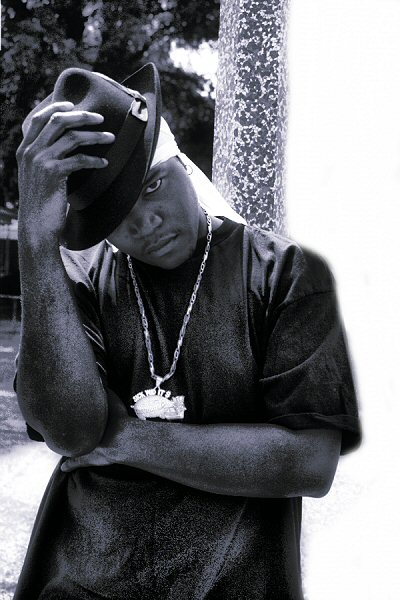
|
Al Kapone: Official Site
From official site: One of the originators of the Memphis underground rap explosion and considered a pioneer of the Dirty South Crunk/Buck style of Hip-Hop popularized by Lil Jon and The Eastside Boys, Al Kapone is blazing the rap scene with his do-it-yourself attitude & fully motivated style. Al's skills landed him a writing and producing job for Craig Brewer's film, Hustle And Flow, produced by film pioneer John Singleton. Al Kapone's talents can also be found on Da Midsouth on Diamond D Records (Cody Dickinson's label). |
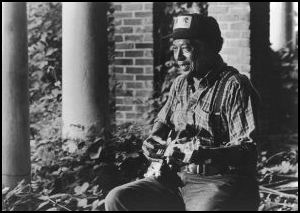
This page of the Mudboy Grotto is in memory of RL Burnside.
November 21, 1926 - September 1, 2005

